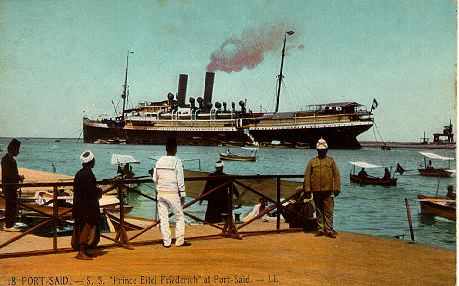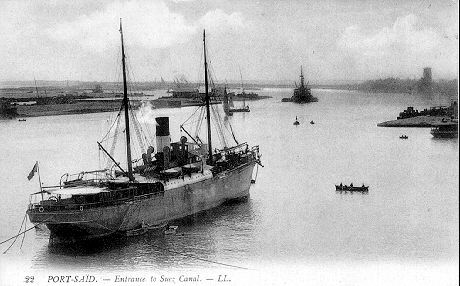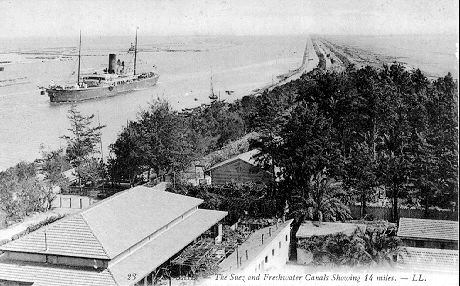
From time immemorial Egypt, in virtue of her geographical situation, has commanded one of the most important trade routes of the world. The gateway between Africa, Asia and Europe, her internal communications have much more than a purelydomestic or internal importance while her home waters are, now as in past ages, ocean highway to and from all nations.
The earliest and most natural method of transport in Ancient Egypt must have been on the waters of the River Nile. The Egyptians were skilled boatmen as many documents and pictures testify But there were many roads in Ancient Egypt. One ran through marshes to what is now the Sudan. There was a road through the Arabian mountains to the Red Sea whence ships sailed to the East. Many records tell of voyages to the land of Puoni (on the Somali coast of Africa) in search of incense, gold and ivory. This route through the mountains is that of the Exodus but there was another road to Syria which, skirting the east border of the Delta, followed the coast from Pelusium, El Arish and Gaza. On the Libyan side there was a coast route to Cyrenaica and a road from Lake Moeris to the oasis of Siwa. The Egyptians were great sailors. From very remote times their ships sailed the Mediterranean and, curiously enough, one of the chief reasons for sending their ships abroad was in order to obtain wood with which and sailed again from Suez from which port a regular service to India was established in the early forties of last century.  Another canal (attributed tol Amr, the Arab conqueror of Egypt in the 7fh century) was in use during the early years of Moslem rule. It is said to have been closed in 770 by the Caliph Abu Ja'far who wished to prevent supplies reaching his enemies in Arabia, and to have been reopened by Sultan Hakim (A.D. 1000). 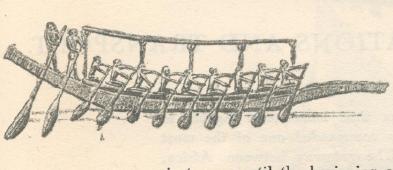 Eleven centuries were to elapse before Harun el Rashid's dream became reality. Said Pasha, third monarch of the Dynasty of Mohammed Aly, ascended the Egyptian throne in 1854. For many years he had been on the friendliest terms with a French engineer, Ferdinand de Lesseps and to him, in November 1854, he granted a concession authorizing him to construct a ship canal through the isthmus of Suez.
It would be tedious to enumerate the diffculties, the obstructions, the anxieties of the great undertaking which, started in 1859, was completed ten years later under the reign of Ismail the Magnificent. The inaugural ceremony took place at Port Said on November 16th, 1869. and next day 68 vessels of various nationalities, headed by the "Aigle" with the Khedive Ismail and Empress Eugenie of France on board, began the first passage through the great Canal. The stark eloquence of figures shows the magnitude of the achievement. In 1870, the first full working year, less than 500 ships went through the Suez Canal. In 1936 the figure was 5,887 with a net tonnage of 32,378,883. The total length of the Suez Canal is 101 miles with a minimum width
of 60 metres. The maximum draught of water allowed for vessels using the
canal is 10.36 metres and the average time for the transit of vessels is
11 hours 14 minutes.
Railways in Egypt are State-owned and are a source of considerable revenue. They are unanimously admitted to be both fast, efficient and confortable. The modern outlook of the Egyptian State Railways may perhaps be illustrated by the fact that Egypt, with her "Antiquities Trains" was one of the first countries to take up "train-cruising." These well-known ,. "Antiquity Trains" not only carry the passenger to the world-famed sites of Luxor but also, drawn up on a siding, serve him as a home during his stay in the ancient city. The inclusive charge is almost ludicrously small. Also worth mentioning is the fact that the Egyptian State Railways have a most enviable record of safety, major railway accidents being so rare as to be almost unknown. Road transport in Egypt is developing at an amazing pace. Autostrades now connect Cairo and Alexandria, Cairo and Suez and Suez with Port Said. Motor-bus services exist in most cities. The ubiquitous motor-car is everywhere to be seen and it is significant that, of the thousands of tourists who visit Egypt annually, an ever-increasing number are bringing their own cars with them. 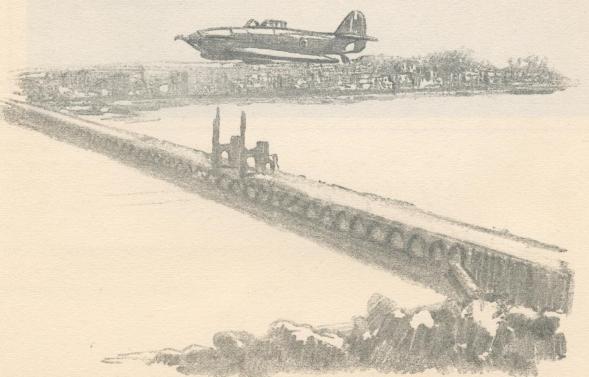 it may be confidently predicted that in the air-minded world of the future Egyptian aviation will be a potent factor of world progress and world peace. |
